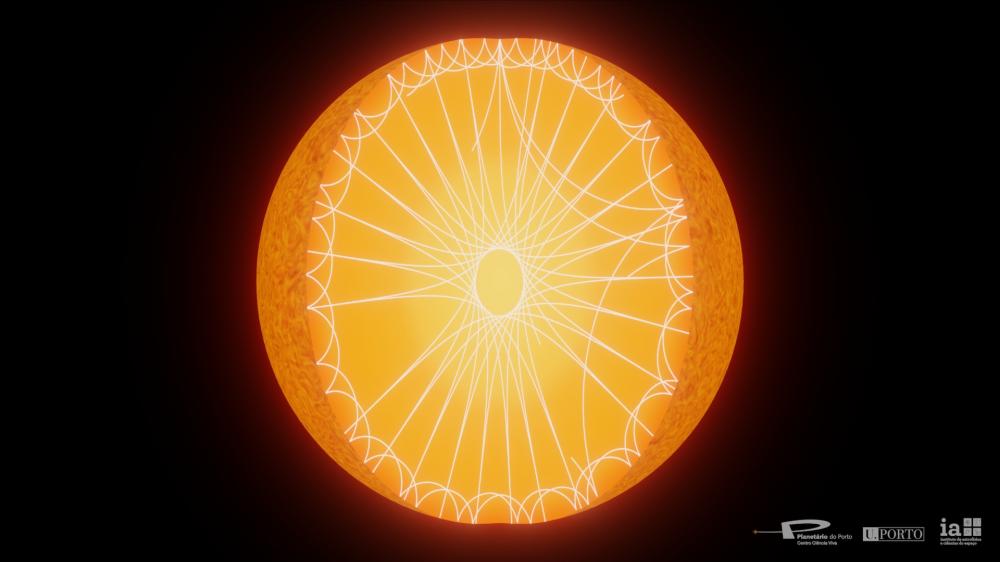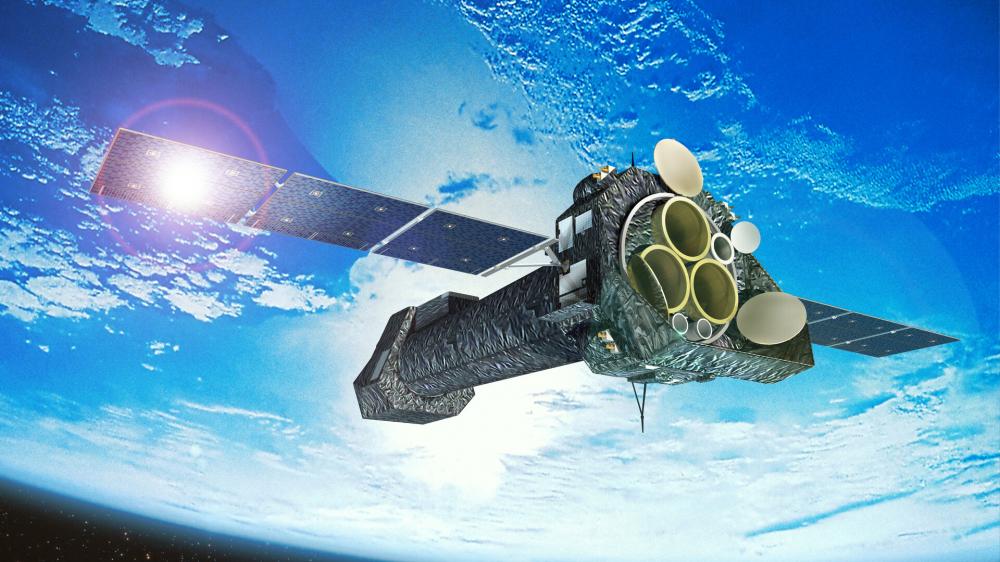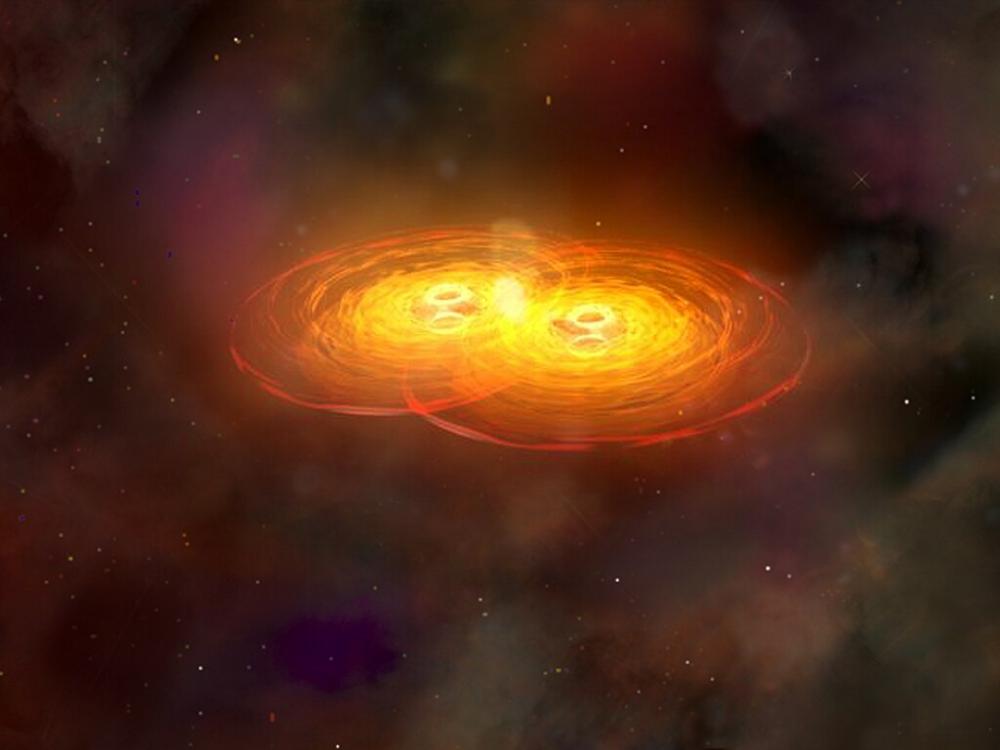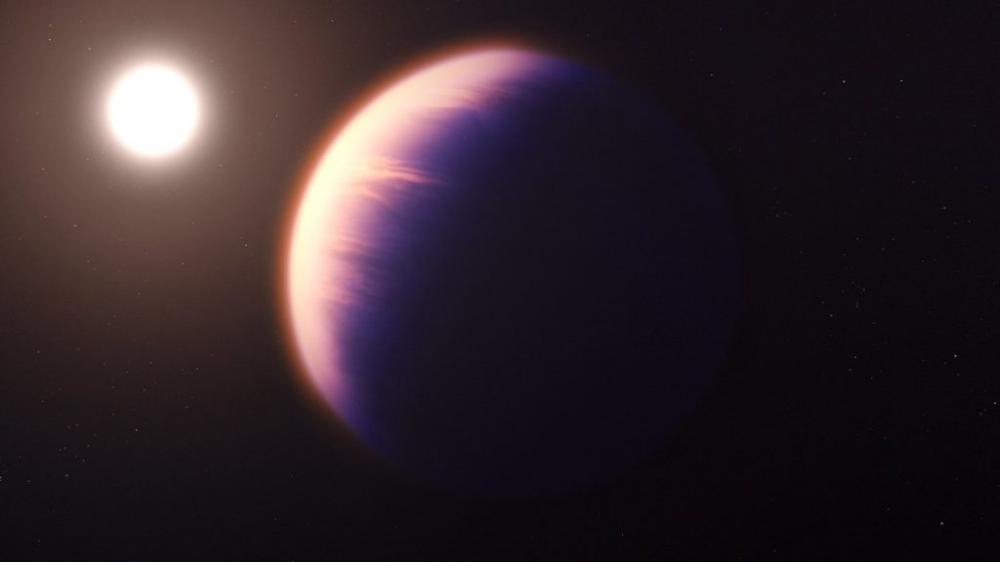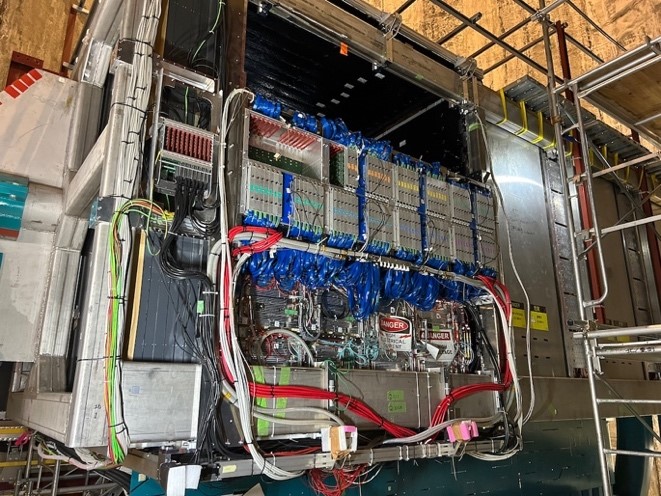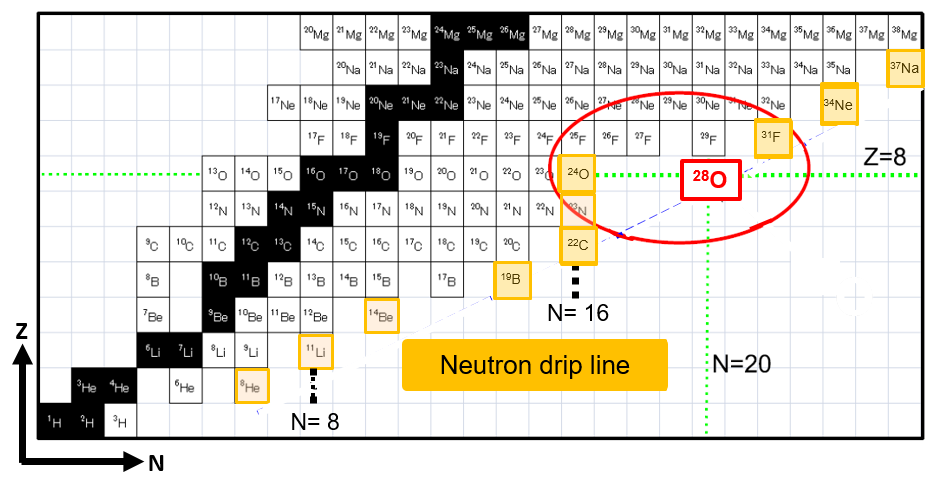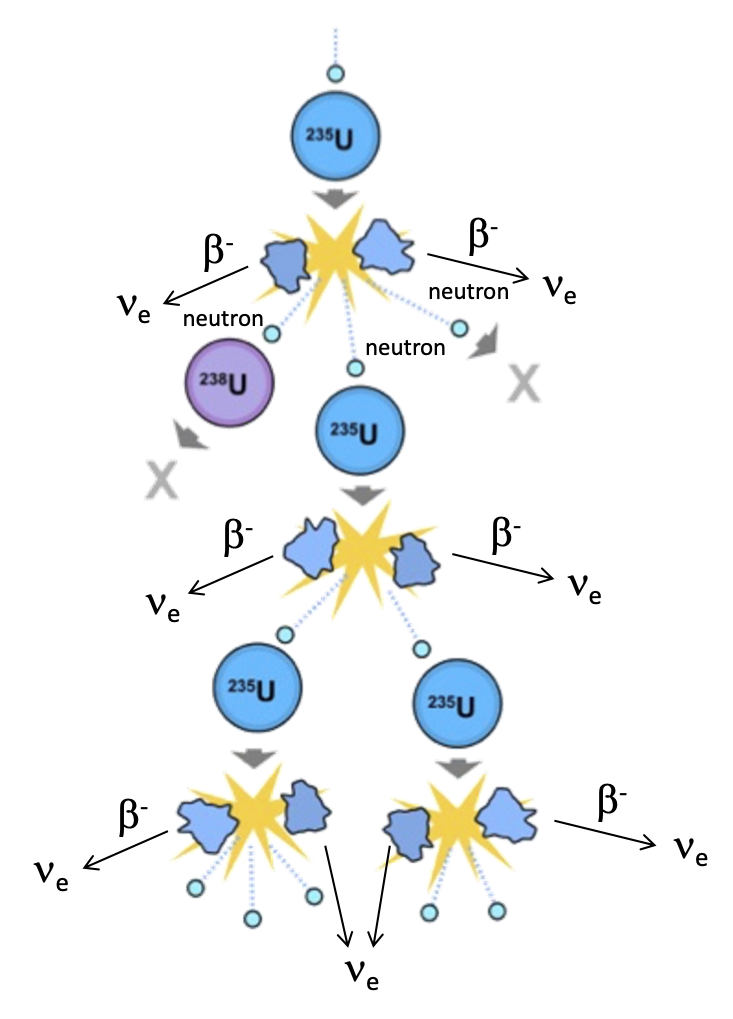An international team, including the Astrophysics Department of CEA-Saclay, led by the Instituto de Astrofísica e Ciências do Espaço (IA), utilized one of the world's most advanced spectrographs to detect the smallest "stellar tremors" ever recorded in an orange dwarf star, making it the smallest and coldest star observed to date with confirmed solar oscillations. This study demonstrates that asteroseismology is a powerful technique for studying such stars, opening new perspectives in our understanding of stellar physics and, by extension, exoplanets.
This study is published in the journal Astronomy & Astrophysics Letters: “Expanding the frontiers of cool-dwarf asteroseismology with ESPRESSO: Detection of solar-like oscillations in the K5 dwarf ε Indi”.
UPDATE [03/26/2024]: Euclid's optics de-icing procedure has produced much better results than expected. The main suspect in the blurred vision of Euclid's VIS instrument was the coldest mirror behind the telescope's main optics. After warming it by just 34 degrees, from -147°C to -113°C, was enough for all the icy water to evaporate. Almost immediately, Euclid regained its sight with 15% more light from the Universe! Scientists and engineers were thus able to determine precisely where the ice had formed, and where it was likely to form again. Find out more on the ESA page.
A few layers of water ice - with the width of a DNA strand - are beginning to affect Euclid's vision; a common issue for spacecraft in the freezing cold of space, but a potential problem for this highly sensitive mission that requires remarkable precision to study the nature of the dark Universe. After months of research, Euclid's teams across Europe, including CEA-Saclay, have devised a new procedure designed to defrost the mission's optics, which involves independently heating the mirrors. The campaign unfolded as planned, and while it's still too early to definitively establish its effectiveness, preliminary analyses are promising.
After being awarded the 2020 Tate Prize for International Leadership in Physics, astrophysicist Dr. Catherine Cesarsky is honored with another prestigious award: the 2024 Fritz Zwicky Prize in Astrophysics & Cosmology for her outstanding contributions to understanding galaxy evolution through infrared space observations, as well as for her leadership in developing contemporary astronomy observation infrastructure.
The Fritz Zwicky Prize for Astrophysics & Cosmology honours scientists who have obtained fundamental and outstanding results related to astrophysics and/or cosmology. The Fritz Zwicky Prize is awarded biennially, for the first time in 2020, by the European Astronomical Society on behalf of the Fritz Zwicky Foundation, located in Glarus, Switzerland.
XMM-Newton's energetic universe joins forces with the Euclid satellite's vision of the sky. A thousand hours of X-ray observations, over a region 40 times the size of the moon, will complement multi-wavelength studies of the cosmic evolution of galaxy clusters. A decisive association to constrain cosmological scenarios and reveal the nature of dark energy.
ISA (Laser Interferometer Space Antenna), the European Space Agency's large-scale mission to explore the Universe by observing the many sources of gravitational waves, was adopted on Thursday January 25 by ESA's Scientific Programs Committee, meaning that the concept and technology are recognized as sufficiently advanced for construction of the instrument and satellites to begin. Launch is scheduled for 2035.
This mission will revolutionize astrophysics, cosmology and fundamental physics, with 3 satellites orbiting the Sun in a 2.5 million km triangle to detect gravitational waves emitting in the millihertz band, such as supermassive black hole binaries. These 3 satellites exchange laser beams to interferometrically detect distance variations of the order of ten picometers induced by gravitational waves. Irfu is heavily involved in the LISA project, contributing to the instrument, data analysis and source science. It is in charge of the reference mass simulator and the stable structure for testing the interferometric core, the analysis of alerts, a contribution to the global analysis and co-leading of the project for France. It is also preparing the scientific exploitation and in particular the tests associated with fundamental physics, the study of the primordial Universe and the study of magnetic fields in white dwarf binary systems.
The James Webb Space Telescope has produced a new portrait of the atmosphere of exoplanet WASP-39b, a "hot Saturn" some 700 light-years away. After the first near-infrared observations in 2022, which revealed for the first time the presence of sulfur dioxide (SO2) in the atmosphere of an exoplanet, it was observed again in 2023, but this time in the far infrared, using the MIRI spectrometer. This new observation enabled the international research team, including Saclay's Astrophysics Department, to confirm the presence of this molecule in the atmosphere of WASP-39b and to constrain its abundance. This recent study demonstrates that photochemistry shapes the atmosphere of WASP-39b over a wide range of wavelengths.
To unravel this mystery, several teams with diverse skills from the Astrophysics Department had to come together, as the architecture that unites the star to its planet is highly complex. They had to combine a detailed understanding of stellar and planetary physics, exploring their interactions, with a thorough knowledge of the observations made by NASA's Kepler satellite to be able to decipher the data.
The study shows that the observed rarity seems to derive not from observational bias, but rather from physical causes. Tidal effects and magnetism are sufficient to explain qualitatively and quantitatively the migration of nearby planets around fast-rotating stars. Moreover, this migration appears to be dependent on the spectral type (fundamentally linked to mass) of the star. While these results are promising, it is nevertheless necessary to expand the sample size to better constrain scarcity and better understand the mechanisms at play. In particular, this study highlights the importance of considering the spectral type of stars (their masses) if we are to correctly model star-planet interactions.
This work is published in Astronomy & Astrophysics.
On January 17, the T2K collaboration announced the launch of the second phase of its experiment, as stated in a press release. This phase will exploit an upgrade of the beam, whose nominal power has been increased from 450 kW to 710 kW, with the aim of reaching 1.2 MW by 2027. An improved version of the experiment's near detector ND280 is also being implemented, incorporating new time-projection chambers using resistive-Micromegas technology designed and developed by the IRFU teams. The aim of this second phase is to collect more than twice the neutrino statistics recorded during the previous phase by 2027, and to reduce the uncertainty in the measured neutrino interaction rate by a factor of two. The aim is to achieve a statistical significance of 3σ on the violation of Charge-Parity (CP) symmetry, in the event of maximum CP violation, as suggested by the results of the first phase of T2K. The discovery of CP symmetry violation in the lepton sector could explain one of the most fundamental mysteries of modern physics: the matter-antimatter asymmetry observed in the Universe.
ISA (Laser Interferometer Space Antenna), the European Space Agency's large-scale mission to explore the Universe by observing the many sources of gravitational waves, was adopted on Thursday January 25 by ESA's Scientific Programs Committee, meaning that the concept and technology are recognized as sufficiently advanced for construction of the instrument and satellites to begin. Launch is scheduled for 2035.
This mission will revolutionize astrophysics, cosmology and fundamental physics, with 3 satellites orbiting the Sun in a 2.5 million km triangle to detect gravitational waves emitting in the millihertz band, such as supermassive black hole binaries. These 3 satellites exchange laser beams to interferometrically detect distance variations of the order of ten picometers induced by gravitational waves. Irfu is heavily involved in the LISA project, contributing to the instrument, data analysis and source science. It is in charge of the reference mass simulator and the stable structure for testing the interferometric core, the analysis of alerts, a contribution to the global analysis and co-leading of the project for France. It is also preparing the scientific exploitation and in particular the tests associated with fundamental physics, the study of the primordial Universe and the study of magnetic fields in white dwarf binary systems.
For the first time, an experiment has provided key observations on the spectroscopy of the neutron-rich unbound oxygen nuclei (proton number Z = 8), oxygen 28 (N = 20) and its neighboring isotope at N = 19, oxygen 27. They were produced in high-energy reactions and observed by direct detection of their decay products, 24O and three or four neutrons. The study shows that it is possible to constrain the parameters of ab initio interactions from the energy differences of the observed states with respect to the last bound isotope - 24O (N = 16). These groundbreaking results were published in the journal Nature [Nat23].
Given the complexity of studying unbound nuclei, an exceptional detection system was implemented at the world's most powerful radioactive ion beam facility: RIBF in Japan. The data were obtained by an international collaboration (Samurai21) of around a hundred physicists (from 36 laboratories), including a team* of physicists from Irfu who were responsible for operating a key detector for the measurements, Minos. The experiment, carried out on the Samurai area of the RIBF (Radioactive Ion Beam Factory) facility at RIKEN in Japan, was piloted by groups of physicists from Titech (Tokyo Institute of Technology) and by the RIKEN-RIBF teams.
ISA (Laser Interferometer Space Antenna), the European Space Agency's large-scale mission to explore the Universe by observing the many sources of gravitational waves, was adopted on Thursday January 25 by ESA's Scientific Programs Committee, meaning that the concept and technology are recognized as sufficiently advanced for construction of the instrument and satellites to begin. Launch is scheduled for 2035.
This mission will revolutionize astrophysics, cosmology and fundamental physics, with 3 satellites orbiting the Sun in a 2.5 million km triangle to detect gravitational waves emitting in the millihertz band, such as supermassive black hole binaries. These 3 satellites exchange laser beams to interferometrically detect distance variations of the order of ten picometers induced by gravitational waves. Irfu is heavily involved in the LISA project, contributing to the instrument, data analysis and source science. It is in charge of the reference mass simulator and the stable structure for testing the interferometric core, the analysis of alerts, a contribution to the global analysis and co-leading of the project for France. It is also preparing the scientific exploitation and in particular the tests associated with fundamental physics, the study of the primordial Universe and the study of magnetic fields in white dwarf binary systems.
Supported by CEA's "digital simulation" cross-disciplinary program, Irfu, the Laboratoire National Henri Becquerel of DRT and the Service d'Étude des Réacteurs et de Mathématiques Appliquées of DES teamed up to carry out a thorough review of calculations of antineutrino spectra from nuclear reactors. A complete revision of the summation method lays a new and solid foundations for these calculations, and was featured as the Physical Review C journal editor’s suggestion [1] on November 27, 2023. This revision incorporates numerous improvements in the beta decay modeling of the thousands of branches making up a reactor antineutrino spectrum, and in the use of nuclear evaluated data. It also quantifies all the systematic effects known to influence the calculations, providing for the first time a complete uncertainty model. This major advance now makes the summation model, long criticized for being approximate and incomplete, a robust tool for predicting reactor antineutrino spectra and for interpreting current and future experimental measurements. This work will likely stimulate targeted research to check and improve the experimental inputs, with potentially wide-ranging impact, from weak-interaction physics to many aspects of nuclear reactor science and technology. It also sheds interesting light on the origin of reactor antineutrino anomalies [2,3].
Sara Bolognesi, a physicist in Irfu's particle physics department, has been awarded the CNRS 2024 silver medal in the particle physics speciality. This medal rewards researchers for the originality, quality and importance of their work, which is recognised internationally and contributes to the reputation of French research.
With more than 5,000 scientists, engineers, technicians, administrators and students, CMS is one of the largest scientific collaborations in the world. With members from more than 240 institutes and universities in nearly 50 countries around the world, the collaboration exploits the data provided by the CMS experiment, one of the two giant general-purpose detectors installed along the circumference of the LHC, CERN's Large Hadron Collider.
Gautier Hamel de Monchenault, a physicist in the particle physics department at CEA-IRFU, was elected on Monday 12 February 2024 as the spokesperson for the CMS collaboration at CERN. He will hold this prestigious position from 1 September 2024 to 31 August 2026. He will be the 10th spokesperson for the CMS collaboration and the second French spokesperson to lead one of the four LHC experiments.
These intense years will see the end of the third data-taking period of the LHC as we know it, and the start of the installation of detector upgrades in preparation for the high-luminosity HL-LHC data, as well as the update of the European particle physics strategy.
On January 17, the T2K collaboration announced the launch of the second phase of its experiment, as stated in a press release. This phase will exploit an upgrade of the beam, whose nominal power has been increased from 450 kW to 710 kW, with the aim of reaching 1.2 MW by 2027. An improved version of the experiment's near detector ND280 is also being implemented, incorporating new time-projection chambers using resistive-Micromegas technology designed and developed by the IRFU teams. The aim of this second phase is to collect more than twice the neutrino statistics recorded during the previous phase by 2027, and to reduce the uncertainty in the measured neutrino interaction rate by a factor of two. The aim is to achieve a statistical significance of 3σ on the violation of Charge-Parity (CP) symmetry, in the event of maximum CP violation, as suggested by the results of the first phase of T2K. The discovery of CP symmetry violation in the lepton sector could explain one of the most fundamental mysteries of modern physics: the matter-antimatter asymmetry observed in the Universe.
ISA (Laser Interferometer Space Antenna), the European Space Agency's large-scale mission to explore the Universe by observing the many sources of gravitational waves, was adopted on Thursday January 25 by ESA's Scientific Programs Committee, meaning that the concept and technology are recognized as sufficiently advanced for construction of the instrument and satellites to begin. Launch is scheduled for 2035.
This mission will revolutionize astrophysics, cosmology and fundamental physics, with 3 satellites orbiting the Sun in a 2.5 million km triangle to detect gravitational waves emitting in the millihertz band, such as supermassive black hole binaries. These 3 satellites exchange laser beams to interferometrically detect distance variations of the order of ten picometers induced by gravitational waves. Irfu is heavily involved in the LISA project, contributing to the instrument, data analysis and source science. It is in charge of the reference mass simulator and the stable structure for testing the interferometric core, the analysis of alerts, a contribution to the global analysis and co-leading of the project for France. It is also preparing the scientific exploitation and in particular the tests associated with fundamental physics, the study of the primordial Universe and the study of magnetic fields in white dwarf binary systems.
Supported by CEA's "digital simulation" cross-disciplinary program, Irfu, the Laboratoire National Henri Becquerel of DRT and the Service d'Étude des Réacteurs et de Mathématiques Appliquées of DES teamed up to carry out a thorough review of calculations of antineutrino spectra from nuclear reactors. A complete revision of the summation method lays a new and solid foundations for these calculations, and was featured as the Physical Review C journal editor’s suggestion [1] on November 27, 2023. This revision incorporates numerous improvements in the beta decay modeling of the thousands of branches making up a reactor antineutrino spectrum, and in the use of nuclear evaluated data. It also quantifies all the systematic effects known to influence the calculations, providing for the first time a complete uncertainty model. This major advance now makes the summation model, long criticized for being approximate and incomplete, a robust tool for predicting reactor antineutrino spectra and for interpreting current and future experimental measurements. This work will likely stimulate targeted research to check and improve the experimental inputs, with potentially wide-ranging impact, from weak-interaction physics to many aspects of nuclear reactor science and technology. It also sheds interesting light on the origin of reactor antineutrino anomalies [2,3].
ISA (Laser Interferometer Space Antenna), the European Space Agency's large-scale mission to explore the Universe by observing the many sources of gravitational waves, was adopted on Thursday January 25 by ESA's Scientific Programs Committee, meaning that the concept and technology are recognized as sufficiently advanced for construction of the instrument and satellites to begin. Launch is scheduled for 2035.
This mission will revolutionize astrophysics, cosmology and fundamental physics, with 3 satellites orbiting the Sun in a 2.5 million km triangle to detect gravitational waves emitting in the millihertz band, such as supermassive black hole binaries. These 3 satellites exchange laser beams to interferometrically detect distance variations of the order of ten picometers induced by gravitational waves. Irfu is heavily involved in the LISA project, contributing to the instrument, data analysis and source science. It is in charge of the reference mass simulator and the stable structure for testing the interferometric core, the analysis of alerts, a contribution to the global analysis and co-leading of the project for France. It is also preparing the scientific exploitation and in particular the tests associated with fundamental physics, the study of the primordial Universe and the study of magnetic fields in white dwarf binary systems.

